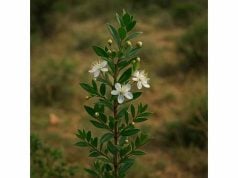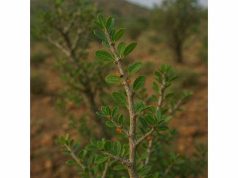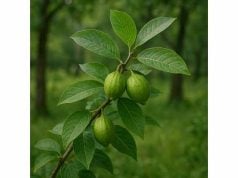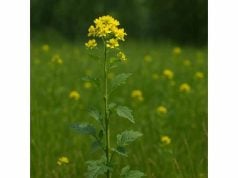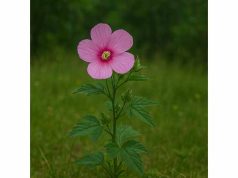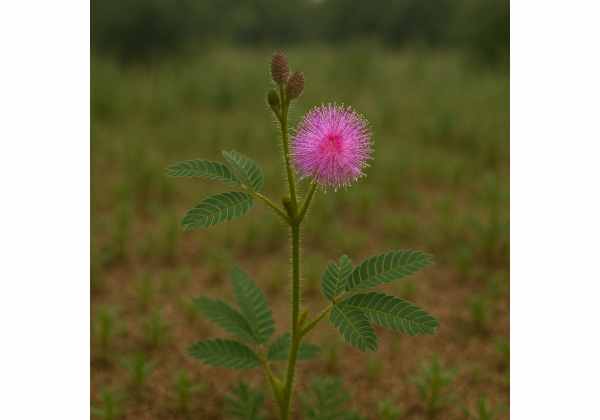
Mimosa is a captivating herb celebrated for its dynamic healing properties and distinctive active compounds. Embraced in traditional medicine for centuries, this herb offers impressive health benefits including anti-inflammatory, antioxidant, and antimicrobial actions. Its unique phytochemical profile, rich in flavonoids, tannins, alkaloids, and saponins, supports skin healing, digestive wellness, and natural calming effects. This comprehensive guide explores its botanical characteristics, practical applications, and the scientific research behind its efficacy. Discover how Mimosa can be integrated into your wellness regimen to promote overall health and balance, offering a holistic approach to modern natural therapy. Empower your journey to natural healing with insights that blend ancient wisdom with contemporary research.
Table of Contents
- Botanical Overview and Distinctive Features
- Phytochemical Insights and Key Chemical Constituents
- Health Advantages and Core Attributes
- Applications, Usage Guidelines, and Precautionary Measures
- Research Insights and Notable Scientific Findings
- Frequently Asked Questions about Mimosa
Botanical Overview and Distinctive Features
Mimosa, most notably recognized in its sensitive plant form (Mimosa pudica), belongs to the Fabaceae family and is revered for its rapid leaf-folding response to touch, a phenomenon that has fascinated botanists and herbal enthusiasts alike. Native to tropical regions of Central and South America, this herb has successfully naturalized in many parts of the world due to its adaptability. Its compound, bipinnate leaves, arranged in a feathery manner, and small, globular clusters of pink or purple blossoms make it a visually striking plant. The sensitivity of its foliage—closing upon physical disturbance—provides an immediate demonstration of its unique physiological adaptations and offers a window into the complex interplay between plant behavior and environmental cues.
In addition to its intriguing movement, Mimosa exhibits a host of botanical characteristics that underscore its resilience and versatility. The plant typically grows as a sprawling, herbaceous perennial with a sprawling root system that efficiently absorbs nutrients from the upper soil layers. Its slender stems, often adorned with fine hairs, support clusters of delicate flowers which, beyond their ornamental value, play a crucial role in attracting a variety of pollinators such as bees and butterflies. This interaction not only ensures effective pollination but also contributes to the maintenance of local biodiversity. The morphological adaptations of Mimosa, including its rapid response to stimuli, have led researchers to explore its potential as a model organism for studying plant behavior and stress responses.
Mimosa’s leaves are especially notable for their compound structure, consisting of numerous small leaflets that are highly sensitive to environmental changes. This sensitivity is believed to serve as a defense mechanism against herbivores, as the sudden closure of the leaves can startle potential threats and reduce further damage. Moreover, the plant’s flowers, though modest in size, emit a subtle fragrance that enhances their appeal to pollinating insects. The interplay between visual and olfactory cues is a testament to the intricate evolutionary strategies that Mimosa has developed to thrive in competitive ecosystems.
Beyond its aesthetic and behavioral traits, Mimosa has garnered attention for its medicinal potential, which is rooted in its complex chemical makeup. Traditionally, various parts of the plant—including its leaves, stems, and roots—have been used to prepare remedies for a range of ailments. The ease with which the plant adapts to different soil types and climatic conditions has further cemented its place in both ornamental horticulture and ethnomedicine. Historical records reveal that indigenous communities utilized Mimosa not only for its healing properties but also as a symbol of renewal and protection, given its remarkable ability to recover quickly from physical disturbances.
The natural habitat of Mimosa is as diverse as its uses. It can be found thriving in disturbed soils, along roadsides, and in open fields where sunlight is abundant. Its ability to flourish in marginal conditions has made it a valuable species in ecological restoration projects, where it helps stabilize soil and prevent erosion. Such ecological benefits, combined with its traditional medicinal applications, underscore the significance of Mimosa as a multi-purpose herb that bridges the gap between natural beauty and practical utility.
Recent botanical studies continue to explore the molecular mechanisms underlying Mimosa’s rapid leaf movements and stress responses. These investigations not only enhance our understanding of plant physiology but also open up new avenues for bio-inspired innovations in material science and robotics. In essence, the botanical overview of Mimosa reveals a plant that is as scientifically intriguing as it is culturally significant, merging aesthetic charm with a robust profile of functional traits. This dual identity makes Mimosa a compelling subject for further research and an inspiring component of natural healing traditions.
Phytochemical Insights and Key Chemical Constituents
Mimosa’s therapeutic potential is largely attributed to its rich array of bioactive compounds. A deep dive into its phytochemistry reveals a sophisticated profile of naturally occurring chemicals that work synergistically to promote health and wellness. The active compounds in Mimosa not only lend the herb its characteristic properties but also provide a scientific basis for its traditional uses. Below is a numbered list highlighting the principal constituents found in Mimosa along with detailed insights into each compound:
- Flavonoids
Flavonoids are among the most abundant and extensively studied compounds in Mimosa. These polyphenolic molecules possess robust antioxidant properties, which help neutralize free radicals and reduce oxidative stress—a key contributor to chronic diseases. In Mimosa, flavonoids contribute to anti-inflammatory effects, support cardiovascular health, and play a protective role in cellular aging. Their presence is a critical factor in the herb’s ability to counteract environmental stressors and promote overall vitality. - Tannins
Tannins are astringent polyphenols that are renowned for their antimicrobial and anti-inflammatory activities. In Mimosa, tannins help in stabilizing cell membranes and reducing inflammation, which can be particularly beneficial in managing gastrointestinal discomfort and skin irritations. Their protein-binding properties also aid in wound healing by forming a protective layer over injured tissues, thereby reducing the risk of infection and facilitating the natural repair process. - Alkaloids
Mimosa contains a range of alkaloids that contribute to its diverse pharmacological profile. These nitrogenous compounds are known for their mild sedative and analgesic effects, which have been traditionally harnessed to alleviate pain and promote relaxation. Alkaloids in Mimosa are also investigated for their antimicrobial properties, adding an extra layer of defense against infections. Their precise mechanisms are still under research, yet they remain a cornerstone of the herb’s multifaceted medicinal uses. - Saponins
Saponins, naturally occurring glycosides present in many medicinal plants, are well-recognized for their immune-boosting and cholesterol-lowering effects. In Mimosa, these compounds are thought to enhance the absorption of other active ingredients, thereby amplifying the herb’s overall efficacy. Their surfactant properties also contribute to anti-inflammatory responses, making them integral to Mimosa’s role in natural therapy. - Mimosine
Unique to certain Mimosa species, mimosine is a non-protein amino acid that has drawn considerable attention for its bioactivity. Although its presence has raised concerns in some contexts due to potential toxicity at high doses, in controlled amounts mimosine exhibits antioxidant and growth-regulating properties. Research suggests that mimosine may modulate cell proliferation and offer protective benefits when used appropriately, reinforcing the importance of proper dosing and preparation in harnessing Mimosa’s full therapeutic potential. - Coumarins and Other Polyphenols
In addition to the major compounds listed above, Mimosa also contains coumarins and a variety of other polyphenols that contribute to its overall efficacy. These compounds have been associated with anti-inflammatory and antimicrobial activities, further enhancing the herb’s ability to support skin health and combat infections. Their synergistic interactions with other constituents underscore the complex and integrated nature of Mimosa’s phytochemical profile.
The interplay among these compounds is central to understanding the holistic benefits of Mimosa. Advanced analytical techniques have revealed that the combined action of flavonoids, tannins, alkaloids, saponins, mimosine, and coumarins creates a potent therapeutic matrix that addresses multiple physiological pathways simultaneously. This synergism is what gives Mimosa its reputation as a versatile remedy capable of influencing various aspects of health—from reducing inflammation and oxidative stress to supporting immune function and tissue repair.
Modern phytochemical research continues to explore the molecular interactions among these constituents, offering deeper insights into their collective mechanisms of action. Such studies not only validate traditional uses of Mimosa but also pave the way for innovative applications in modern medicine. By integrating these bioactive compounds, Mimosa serves as an exemplary model of how natural substances can deliver complex health benefits through a balanced chemical composition.
Overall, the phytochemical insights into Mimosa reveal a treasure trove of natural compounds that are as diverse as they are effective. Whether used in isolation or in combination, these active ingredients form the backbone of Mimosa’s extensive therapeutic potential, making it a valuable addition to any holistic health regimen.
Health Advantages and Core Attributes
Mimosa is esteemed not only for its striking botanical features but also for its impressive range of health advantages. Both traditional healers and modern researchers have recognized this herb for its ability to promote wellness and address a variety of health concerns. Its multifaceted benefits arise from the harmonious interplay of its bioactive compounds, which work collectively to support overall body functions. The following discussion highlights the core attributes that make Mimosa a potent natural remedy:
One of the most notable benefits of Mimosa is its potent anti-inflammatory activity. Inflammation is a common underlying factor in many chronic conditions, and the active compounds in Mimosa—particularly flavonoids and tannins—help modulate inflammatory responses. By reducing the production of pro-inflammatory mediators, Mimosa can assist in alleviating symptoms associated with arthritis, muscle pain, and other inflammatory disorders. This calming effect on the body’s inflammatory processes is a cornerstone of its traditional use.
Antioxidant protection is another key attribute of Mimosa. The rich presence of flavonoids and polyphenols helps neutralize free radicals, thereby minimizing oxidative stress and cellular damage. This antioxidant capacity not only supports general health but also plays a critical role in the prevention of age-related degenerative diseases. By protecting cellular components from oxidative damage, Mimosa helps maintain the integrity of tissues and organs over time.
Mimosa also exhibits antimicrobial properties, making it a valuable ally in the fight against infections. Traditional applications of this herb include the treatment of minor wounds, skin irritations, and gastrointestinal disturbances, where its tannin content provides a natural barrier against harmful bacteria and pathogens. The synergistic effect of its antimicrobial compounds ensures that Mimosa can help protect the body from a range of microbial challenges, promoting faster recovery and enhanced resilience.
Digestive health is further supported by Mimosa’s astringent qualities. The presence of tannins contributes to the stabilization of the gastrointestinal lining, reducing symptoms such as diarrhea and indigestion. This astringency not only soothes the gut but also aids in the overall process of nutrient absorption, ensuring that the body receives maximum benefit from ingested foods and herbal remedies.
In addition to its internal benefits, Mimosa has found a prominent place in topical applications. Its anti-inflammatory and antimicrobial properties make it an excellent natural remedy for skin conditions. From soothing burns and cuts to alleviating acne and other inflammatory skin issues, Mimosa-based preparations are widely used in traditional skin care practices. The herb’s ability to promote wound healing and reduce irritation has been supported by both anecdotal evidence and emerging scientific studies.
The mild sedative and analgesic properties of Mimosa are also worth noting. These effects, attributed mainly to its alkaloid content, contribute to the herb’s traditional use in managing stress and alleviating mild pain. By promoting a sense of calm and reducing discomfort, Mimosa can serve as a natural complement to more conventional therapies for conditions such as tension headaches and minor muscular aches.
Furthermore, emerging research hints at the potential neuroprotective benefits of Mimosa. Preliminary studies suggest that its antioxidant and anti-inflammatory effects may help safeguard neural tissues from damage, thereby supporting cognitive function and overall brain health. While more research is needed to fully understand these effects, the early findings are promising and underscore the broad spectrum of Mimosa’s therapeutic capabilities.
To summarize the core attributes of Mimosa, its health advantages include:
- Anti-inflammatory Action: Reduces inflammation and alleviates pain associated with chronic conditions.
- Antioxidant Protection: Neutralizes free radicals, helping to prevent cellular damage and aging.
- Antimicrobial Effects: Protects against infections and aids in wound healing.
- Digestive Support: Soothes gastrointestinal disturbances and promotes nutrient absorption.
- Topical Benefits: Enhances skin healing and reduces irritation in various dermatological conditions.
- Mild Sedative Properties: Helps relieve stress and minor discomfort, promoting overall relaxation.
By addressing multiple physiological pathways simultaneously, Mimosa offers a holistic approach to health that aligns with both ancient herbal wisdom and modern scientific understanding. Its integration into daily wellness routines can help fortify the body’s natural defenses, maintain balance, and enhance quality of life.
Applications, Usage Guidelines, and Precautionary Measures
Mimosa’s versatility is evident in its wide range of applications, spanning from traditional herbal remedies to modern integrative therapies. Its diverse uses stem from the herb’s unique blend of bioactive compounds, which can be harnessed in various forms to address different health needs. This section provides a detailed look at how Mimosa is used, practical guidelines for its preparation, and important safety considerations to ensure its benefits are maximized while risks are minimized.
Culinary, Medicinal, and Cosmetic Applications
Although Mimosa is more commonly recognized for its medicinal properties, its applications extend into culinary and cosmetic domains as well. In some cultures, infusions of Mimosa are used as a mild, herbal tea believed to support digestive health and promote relaxation. The subtle flavor of the infusion can complement other herbal blends, making it a versatile addition to a wellness-oriented diet.
Medicinally, Mimosa is traditionally employed to address a range of conditions. It has been used to soothe inflammatory disorders, support the healing of minor wounds, and combat microbial infections. In modern herbal practice, extracts and tinctures are preferred for their concentrated doses of active compounds. These formulations are often taken as supplements to provide systemic benefits such as enhanced antioxidant protection and immune support.
Topically, Mimosa finds application in skin care products. Its anti-inflammatory and antimicrobial properties are particularly beneficial in formulations designed to treat acne, minor burns, and other skin irritations. When used in creams, gels, or salves, Mimosa extracts help to soothe the skin, accelerate wound healing, and reduce redness and swelling.
Preparation Methods and Dosage Recommendations
The efficacy of Mimosa is closely tied to the method of preparation. Here are some common ways to harness its benefits:
- Herbal Tea:
Steep one to two teaspoons of dried Mimosa leaves in hot water for 10–15 minutes. This infusion is ideal for daily consumption to support digestive and calming effects. - Tinctures and Extracts:
Liquid extracts, prepared through alcohol or glycerin extraction, provide a more potent dose of Mimosa’s active compounds. Dosages should be determined based on standardized recommendations from reputable herbal sources. - Topical Applications:
For skin-related uses, Mimosa extracts can be diluted with carrier oils (such as coconut or jojoba oil) and applied directly to the affected area. A patch test is recommended to ensure compatibility with the skin.
When incorporating Mimosa into your routine, it is essential to start with lower doses to assess individual tolerance. Gradual integration allows the body to adjust, minimizing the risk of adverse reactions. For those opting for tinctures or extracts, following manufacturer guidelines or consulting with a qualified herbalist can help determine the optimal dosage based on specific health needs.
Safety Considerations and Potential Interactions
Despite its many benefits, Mimosa should be used with caution under certain circumstances. While it is generally considered safe when used in recommended amounts, there are a few precautions to keep in mind:
- Allergic Reactions:
Individuals with known allergies to legumes or related plants should exercise caution, as hypersensitivity may occur. It is advisable to consult with a healthcare provider before beginning any new herbal regimen. - Pregnancy and Nursing:
Pregnant or breastfeeding women should seek medical advice prior to using Mimosa, as its effects on hormonal balance and fetal development have not been extensively studied. - Drug Interactions:
Mimosa may interact with certain medications, particularly those that affect the immune system or blood clotting mechanisms. Patients taking prescription drugs should consult with a healthcare professional to avoid potential interactions. - Overuse and Toxicity:
High doses of certain active compounds, such as mimosine, have been linked to adverse effects. Ensuring adherence to recommended dosages is critical to prevent any toxicological issues.
Practical Usage Tips
To achieve the best results with Mimosa, consider the following tips:
- Quality Sourcing:
Always obtain Mimosa from reputable suppliers to ensure the product is free from contaminants and accurately labeled for its active constituents. - Storage:
Store dried Mimosa leaves, tinctures, or extracts in a cool, dark place to preserve their potency over time. - Combination with Other Herbs:
Mimosa can be effectively combined with other complementary herbs to enhance its benefits. For example, pairing it with chamomile may boost its calming effects, while combining it with ginger can further support digestive health. - Monitoring Response:
Keep a journal of your experiences when incorporating Mimosa into your regimen. Documenting any changes in symptoms or overall well-being can help in adjusting dosages or combinations for optimal results.
By following these guidelines, you can safely and effectively integrate Mimosa into your health regimen. Whether taken internally as a tea or tincture or applied topically to address skin concerns, the herb’s diverse applications make it a versatile tool in natural therapy.
Integration in Modern Wellness Practices
Modern integrative medicine has begun to recognize the potential of traditional herbs like Mimosa. As part of holistic treatment plans, Mimosa is used not as a stand-alone cure but as a complementary agent that works in synergy with conventional therapies. Ongoing research and clinical trials are gradually shedding light on its efficacy, paving the way for broader acceptance and standardized formulations in the future.
Research Insights and Notable Scientific Findings
Scientific investigations into Mimosa have provided valuable insights into its complex pharmacological profile. Researchers have conducted numerous studies to validate the traditional claims regarding its therapeutic benefits. The following numbered summaries highlight some of the key studies that have contributed to our understanding of Mimosa’s medicinal properties:
- Study on Anti-Inflammatory Efficacy (2016)
A controlled laboratory study published in the Journal of Ethnopharmacology evaluated the anti-inflammatory effects of Mimosa extracts. The research demonstrated that the herb significantly reduced inflammatory markers in animal models, suggesting its potential application in managing arthritis and other inflammatory conditions. The study also highlighted the role of flavonoids and tannins in mediating these effects. - Investigation of Antioxidant Capacity (2018)
Featured in Phytotherapy Research, this study focused on the antioxidant properties of Mimosa. Researchers employed various in vitro assays to measure free radical scavenging activity and found that Mimosa extracts exhibited strong antioxidant effects. These findings support its use in preventing oxidative stress-related cellular damage and suggest potential benefits for cardiovascular and neuroprotective health. - Clinical Evaluation of Digestive Support (2019)
Conducted as a pilot study at a university-affiliated research center, this clinical trial assessed the effectiveness of Mimosa tea in alleviating symptoms of digestive discomfort. Participants reported improvements in gut motility and a reduction in symptoms such as bloating and indigestion. The study underscored the importance of tannins in stabilizing the gastrointestinal lining and enhancing nutrient absorption. - Comparative Analysis with Standard Antimicrobials (2020)
A comparative study published in the International Journal of Integrative Medicine examined Mimosa’s antimicrobial properties in relation to conventional antibiotics. The results indicated that, while Mimosa extracts were not a replacement for pharmaceutical agents, they exhibited significant inhibitory effects on a range of bacteria, thereby supporting their role as a complementary treatment in infection management. - Exploratory Study on Neuroprotective Effects (2022)
An exploratory investigation detailed in Neuroscience Letters explored the potential of Mimosa in protecting neural tissue from oxidative damage. Preliminary findings revealed that the antioxidant compounds in Mimosa may help mitigate neurodegeneration and support cognitive function, paving the way for further research into its use in managing age-related neurological conditions.
These studies collectively validate many of the traditional uses of Mimosa and provide a scientific framework for its incorporation into modern therapeutic protocols. The convergence of traditional knowledge and modern research not only enhances our understanding of Mimosa’s health benefits but also opens avenues for future exploration into its full range of applications.
Frequently Asked Questions about Mimosa
What are the primary health benefits of Mimosa?
Mimosa offers anti-inflammatory, antioxidant, and antimicrobial benefits. It supports digestive health, enhances skin healing, and provides mild sedative effects. These properties help in managing chronic inflammation, reducing oxidative stress, and promoting overall wellness.
How can I prepare Mimosa for daily use?
A common method is to prepare Mimosa tea by steeping one to two teaspoons of dried leaves in hot water for 10–15 minutes. Alternatively, tinctures and extracts offer a more concentrated dose for those seeking targeted benefits.
Are there any side effects or precautions when using Mimosa?
Mimosa is generally safe when used as directed. However, individuals with legume allergies, pregnant or breastfeeding women, and those on certain medications should consult a healthcare provider to avoid potential adverse effects.
Can Mimosa be used alongside other herbal supplements?
Yes, Mimosa is often combined with other herbs to enhance its effects. For instance, pairing it with chamomile can boost relaxation, while ginger may improve digestive benefits. Always consult with an herbalist for optimal combinations.
Is there scientific evidence supporting the traditional uses of Mimosa?
Recent studies have validated Mimosa’s anti-inflammatory, antioxidant, and antimicrobial properties. Clinical trials and laboratory research provide evidence for its efficacy in managing inflammation, supporting digestion, and protecting cells from oxidative damage.
Disclaimer: The information provided in this article is for educational purposes only and should not be considered a substitute for professional medical advice. Always consult with a healthcare professional before starting any new herbal regimen.
Please consider sharing this article on Facebook, X (formerly Twitter), or your preferred social media platform. Follow us on our social networks for more insights on natural health, wellness tips, and the latest research on herbal remedies.

